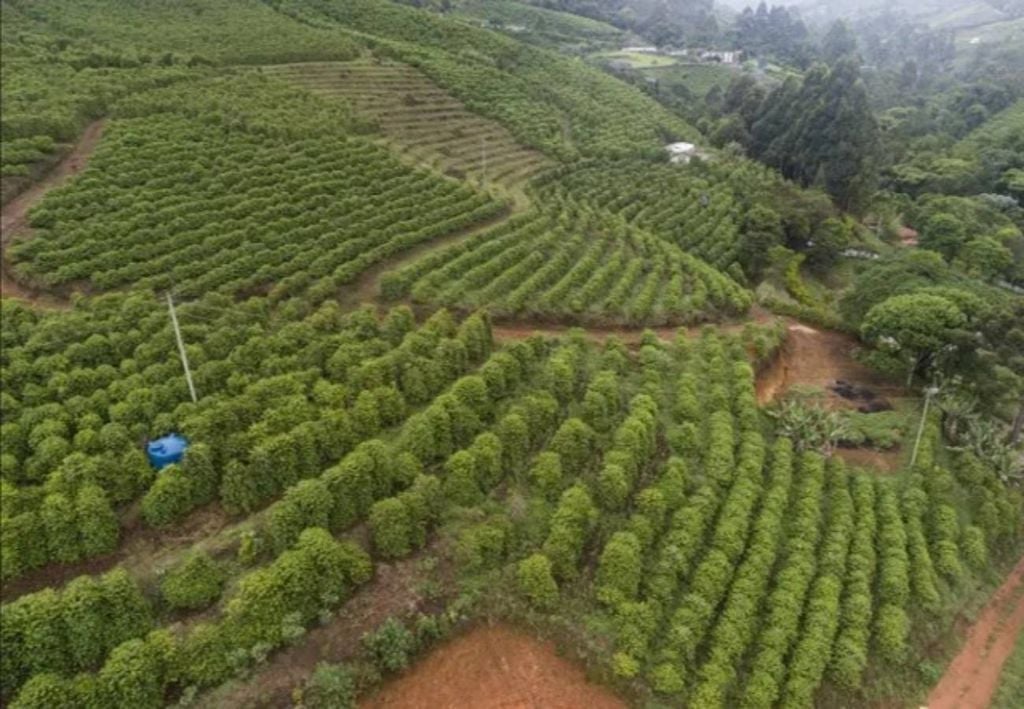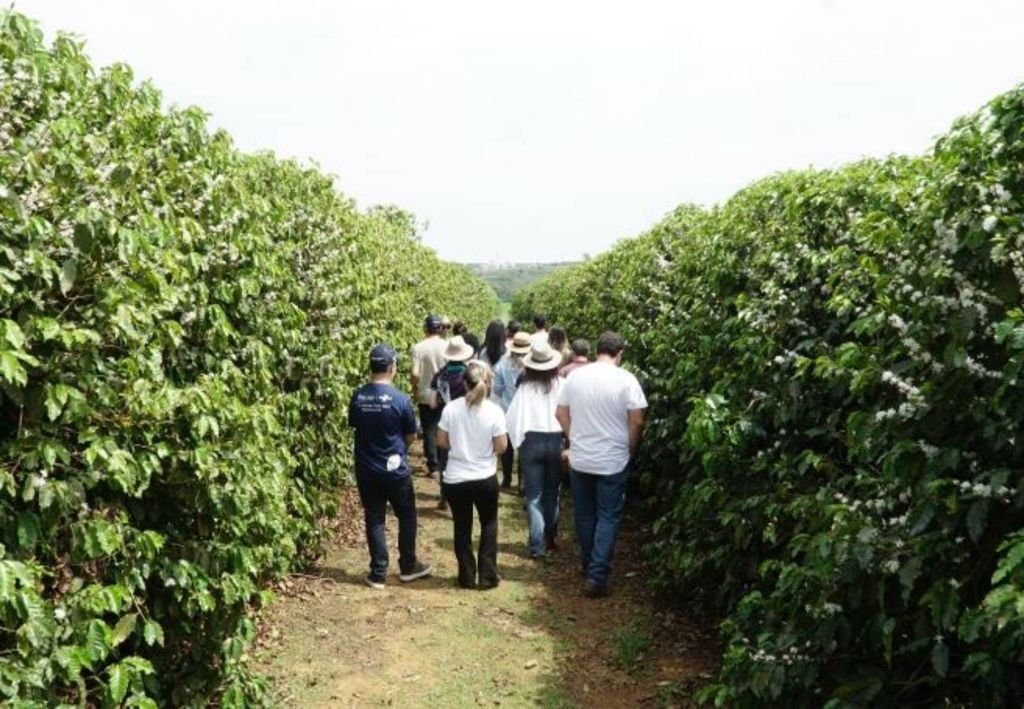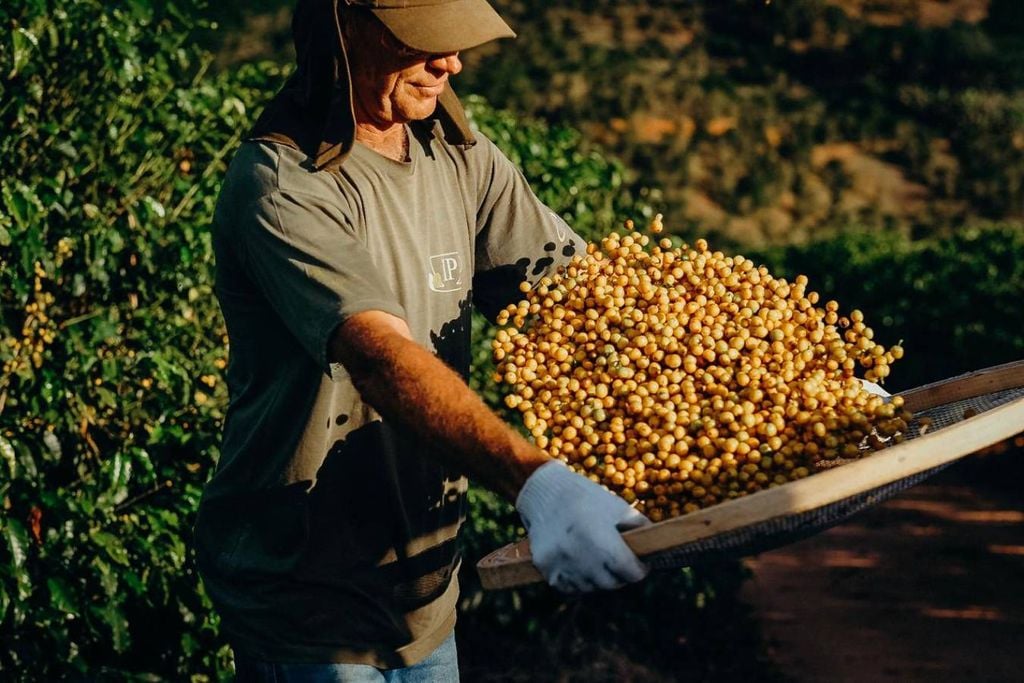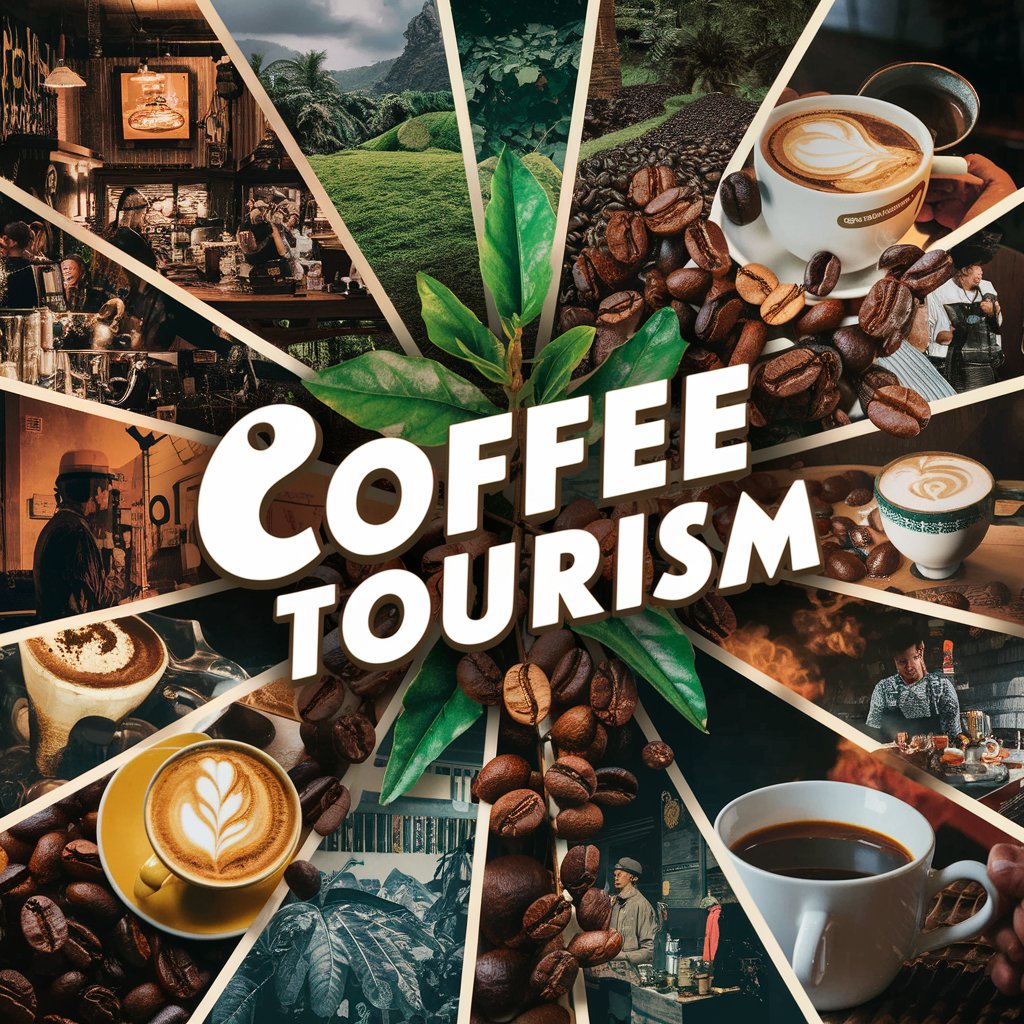If you are passionate about coffee, then this article is for you. We have listed 5 coffee tourist destinations in world, which is also the 2nd largest consumer of the drink.Coffee tourism has become a delightful trend for enthusiasts eager to explore the rich tapestry of flavors and experiences that come with every cup. Imagine walking through lush coffee plantations, inhaling the fragrant aroma of freshly roasted beans, and learning about the unique brewing methods from local artisans. Whether you’re sipping a robust brew in Colombia or enjoying an aromatic espresso in Italy, each destination offers its own cultural twist on this beloved beverage. For those passionate about coffee, these journeys not only tantalize your taste buds but also provide insight into the history and craftsmanship behind one of the world’s most cherished drinks. Ready to embark on an adventure? Let’s dive into five must-visit destinations where coffee reigns supreme!
coffee lovers

The real professional coffee tasting
Since coffee is a drink with a vast complexity of layers of flavor and aroma, there are also several steps necessary to fully appreciate it:
Sample dose :
each cup should contain approximately 9 grams of coffee, and 5 cups should be used for each tasting, as a minimum sample.
Grinding the sample :
grinding should be done separately to prevent defective beans from contaminating other cups. After serving, the cups should be covered for 3 minutes so that the aroma of the coffee can be felt “dry” and its fragrance assessed.
Water outlet
“Use fresh, odo
rless water, but the most important thing is to always use the same type of water. This water should reach a temperature of at least 93ºC and then pass it directly through the ground coffee. The desired proportion is 9 grams of coffee per 150 ml of water.
Finally, the Tasting.
Break the layer of cream formed on top with a spoon, repeatedly, to evaluate the aroma of the coffee.
When it reaches a temperature of approximately 60ºC, then taste it and evaluate its flavor – both immediate and residual.
When the coffee cools a little more, evaluate the acidity, body and balance of the coffee, leaving its sweetness for last.
Finally, assign a numerical rating, which will classify the coffee and place it in a specific category.”
If you are a coffee lover, this could be an interesting activity to do at home with your family.
Origin of Constantino Coffee
Located on the border between São Paulo and Minas Gerais, the Alta Mogiana region has had a strong presence in the coffee industry for over 150 years, exerting great influence on practically all phases of the history of the bean in Brazil. Known worldwide for the cultivation of Arabica coffees of extraordinary quality, balanced body and acidity, natural sweetness and caramel aroma, the region is located on a plateau with an altitude of between 800 meters and 1200 meters.
Italy: The Birthplace of Espresso
Italy is synonymous with coffee culture. It’s the birthplace of espresso, a drink that has captured hearts worldwide.
Imagine sitting in a quaint café on a cobbled street in Rome. The aroma of freshly brewed coffee wafts through the air, inviting you to indulge. Here, every sip tells a story steeped in tradition.
The art of making espresso is taken seriously. Baristas train for years to perfect their craft. Each shot is an expression of passion and precision.
From Milan’s bustling cafés to Naples’ historic charm, each region offers its own twist on this beloved beverage. Exploring these differences adds depth to your journey into coffee tourism—an adventure that promises unforgettable flavors and memories.

Five coffee tourist routes to discover
The Mountains have coffee plantations planted under the shade of Atlantic Forest trees, which protect the beans and make the coffee taste even better . The beans are hand-picked and the powder is produced by hand by local workers.
Colombia: The Home of Some of the World’s Best Coffee
Colombia is often celebrated as a coffee paradise. The lush green hills of the Coffee Triangle produce some of the finest beans in the world.
Coffee lovers flock to this region to experience its rich flavors and captivating aromas. Here, you can sip on a freshly brewed cup while surrounded by stunning landscapes.
The tour is hosted by the Coffee Roaster Porto Feliz agency . Tourists can choose the entire route, which includes five producing farms, a roaster and a specialized coffee shop. You will be able to see the plantations and the grain cultivation processes, as well as try local cuisine and traditional coffee .

The farms that can be visited are: Bela Vista, Santa Cruz da Verge Grande, AgroBeloni, Rainhat da Paz and Argo Nunes. There is also the Cafeteria Dulcerrado by Expo acer, where a guided tour, a workshop on coffee preparation methods and a tasting with regional products are available.
Specialty Coffee Route, in Serra da Mantiqueira (MG).

The altitude of more than 1,300 meters above sea level, and with crops in some mountainous areas, makes the coffee from this region one of the best in the world, and internationally awarded.
Coffee Route of Serra do Caparaó
The district of Forquilha do Rio, in the municipality of Dores do Rio Preto, in Espírito Santo, provides access to the Serra do Caparaó Coffee Route, which is on the border of that state with Minas Gerais. Factors such as the cold and humid climate, the altitude, the terroir and the cultivation techniques make the coffee from the region one of the best in the country.
Take a day trip to Salento and visit a traditional coffee farm from Pereira with hotel transfers. Learn about coffee production, savor a home-cooked meal, and enjoy a coffee-tasting session with baristas.
Ethiopia: The Origin of Coffee
Ethiopia holds a special place in the hearts of coffee enthusiasts. This is where it all began, thousands of years ago. Legend has it that a goat herder named Kaldi discovered coffee when he noticed his goats became energetic after munching on berries from a particular tree.
Today, Ethiopian coffee is celebrated for its unique flavors and rich heritage. The country boasts diverse growing regions, each contributing distinct taste profiles. From fruity notes to floral aromas, Ethiopian beans are truly exceptional.
Visitors can explore lush plantations nestled in the highlands or participate in traditional coffee ceremonies. These rituals highlight Ethiopia’s deep-rooted culture surrounding this beloved beverage.
Vietnam: A Rising Star in the Coffee Industry
Vietnam has rapidly emerged as a significant player in the global coffee scene. Known primarily for its robusta beans, the country produces some of the strongest and most flavorful coffee available.
The unique climate and fertile soil create ideal conditions for coffee cultivation. As you explore Vietnam, you’ll find lush plantations nestled in picturesque landscapes, particularly in regions like Dak Lak and Lam Dong.
Coffee culture here is vibrant and diverse. Traditional Vietnamese drip coffee, known as “cà phê sữa đá,” combines rich black coffee with sweetened condensed milk served over ice—a must-try for any visitor.
Hawaii: A Unique and Exotic Coffee Experience
Hawaii boasts a coffee culture like no other. The islands are home to the famous Kona coffee, grown on the slopes of Hualalai and Mauna Loa.
This rich, smooth brew thrives in the volcanic soil and ideal climate conditions. Visiting a Kona coffee farm is an experience unlike any other.
You can tour lush plantations, learn about cultivation techniques, and even participate in bean picking during harvest season. Each sip tells a story crafted by local farmers dedicated to their craft.
Beyond Kona, try unique varieties found on Maui or Kauai. These coffees offer distinct flavors influenced by their environments.
The scenic landscapes enhance your tasting adventure too—ocean views combined with fragrant coffee blossoms create an unforgettable backdrop. Exploring Hawaii’s diverse offerings will leave you craving more than just caffeine; it’s an immersion into island life soaked in tradition and passion for quality beans.
Tips for Planning a Successful Coffee Tour
Planning a coffee tour can be an exciting adventure. Start by researching the destinations you want to visit. Each region has its unique flavors and brewing techniques.
Consider timing your trip around local coffee festivals or harvest seasons. This will enhance your experience and connect you with passionate farmers and baristas.
Don’t forget about transportation. Renting a car might offer more flexibility, especially in rural areas where many coffee farms are located.
Engage with locals at each stop. They can share stories that enrich your understanding of their coffee culture.
Take notes during tastings. Jotting down flavor profiles will help you remember what stood out long after the trip is over. Enjoy every sip!
THE MOST IMPORTANT COFFEE PRODUCING REGIONS IN THE WORLD
The International Coffee Organization estimates that, in 2018, the countries that exported the most coffee beans, in 60 kg bags, were:
- Brazil = 62,500
- Vietnam = 29,500
- Colombia =14,200
- Indonesia = 10,200
- Ethiopia = 7,500
- Honduras = 7,450
- India = 5,200
- Uganda = 4,900
- Mexico = 4,500
- Peru = 4,400
By continent, those that produce the largest quantity of coffee, also in 60kg bags, are:
- South America = 82,335
- Asia and Oceania = 47,254
- Mexico and Central America = 21,712
- Africa = 17,742
Clearly, Brazil and Colombia are the two countries that contribute most to South America’s 1st place in the ranking, they are the regions where the most coffee is grown and produced and, consequently, they are also the regions that export the most.
As far as types of coffee are concerned, the most common crop is also the most consumed in the world, Arabica coffee, which in 2018 alone produced more than 6,000,000 kg.
The Robusta coffee variety, the 2nd most produced, had around 3,000,000 kg exported, with its main origin being Vietnam, with 80% of production, followed by Uganda, with the largest variety of Robusta coffee in the entire African continent.
DISCOVER THE 8 MAIN STEPS OF THE COFFEE PRODUCTION PROCESS
Long before you can enjoy the unique flavor of a good coffee in your cup, it goes through an interesting journey that has been perfected generation after generation.
Do you know what the main steps are?
- Plantation
- Harve
- Processing
- Cure
- Tasting
- Roasting
- Grinding
- Preparation
1: Plantation
Planting is logically the first stage in the coffee production process.
It is the beginning of a natural production cycle, in which the seeds grow and become plants that can reach up to 10 meters in height.
2: Harvest
The harvest is carried out annually, when the coffee fruits are ripe.
There are two distinct harvesting methods: picking and stripping.
When choosing, the ripest fruits are selected and picked manually, which results in a uniform and quality harvest.
Removal is a mechanized process in most cases, in which all the fruits are harvested at the same time, so that a subsequent check is usually carried out for a more detailed selection.
3: Processing
At this stage, the fruits are left to dry until they are ready for the next steps. This processing can be done using the dry or wet method.
Depending on the method selected, the flavor of the coffee will acquire different characteristics in terms of acidity and aroma.
4: Healing
Curing occurs immediately after drying. Its main function is to remove the husk that covers the coffee bean in order to classify it according to its quality, shape and size.
5: Tasting
Tasting is something that occurs throughout the different phases of the process and with different objectives. Its ultimate goal is to analyze quality and flavor.
6: Roasting
It is during the roasting phase that coffee acquires its most characteristic flavors and aromas. The beans are subjected to high temperatures of up to 200°, causing them to increase in size by 80-100%, lose 12-20% of their weight, reduce their caffeine content and finally acquire their characteristic color.
7: Grinding
Grinding is the process of reducing the coffee beans to powder. If the coffee is prepared immediately after this process, it will have an even more intense aroma and flavor.
De’Longhi, a leading brand in automatic and manual coffee machines, in addition to offering you the possibility of having a coffee machine with an integrated grinder and enjoying that experience of fresh, freshly ground coffee, also has a grinder available where, even if you don’t have an automatic machine, you can grind your favorite coffee and enjoy a unique coffee experience.
8: Preparation
There are countless ways to prepare coffee, whether plain or with milk, each consumer’s preference will determine how the infusion is prepared.
Coffee vs Tea
What is your favorite comfort drink ? Tea or Coffee?
There are several things these two drinks – some of the most consumed in the world – have in common, but there are also some things they differ from each other in. (We’ll tell you all about it
Tea and coffee, also considered an infusion, are drinks commonly known for their star substances – caffeine and theine – and, although both originate from plants, their effects are somewhat different.
Its composition contains bioactive elements that offer proven health benefits , including improved mental performance and attention span, increased concentration and, in the case of coffee, increased reaction capacity. Its benefits in preventing diseases such as diabetes, Parkinson’s disease and Alzheimer’s are also recognized..
The amount of energy that each of these drinks provides is also different. Coffee is capable of delivering greater energy value more quickly, but its effect is less prolonged. On the other hand, tea provides energy more gradually, but also for a much longer period of time.
Conclusion
Coffee tourism offers a unique way to explore the world through your taste buds. Each destination showcases its own coffee culture, flavors, and traditions that can enhance your appreciation for this beloved beverage. Whether you find yourself in Colombia’s lush mountains or sipping espresso in a quaint Italian cafe, each journey promises rich experiences.
Traveling to Ethiopia allows you to walk in the footsteps of coffee’s origin while Vietnam surprises with its innovative brews. Hawaii stands out as an exotic locale where coffee is grown amidst breathtaking landscapes.
As you plan your next travel adventure centered around coffee tourism, embrace the local customs and stories behind every cup. Delight in tastings, farm tours, and cultural exchanges along the way. Your passion for coffee will undoubtedly lead to unforgettable memories filled with aroma and flavor from around the globe.
FAQS
1. Coffee is one of the most exported goods in the world!
In terms of the ranking of the most exported goods in the world, coffee occupies second place, only being dethroned by oil.
Coffee also ranks second in the ranking of the most consumed beverages in the world, surpassed only by the most essential commodity, water.
2. What is the coffee consumption in the world?
If we consider the total volume of consumption, the United States of America is the country where the most coffee is consumed, with a total of around 400 million cups of coffee every day.
If we analyze the relative data, taking into account the number of inhabitants per country, the ranking is led by Finland, with around 12 kg of coffee consumed per inhabitant during the period of 1 year.
3. How much coffee do Portuguese people consume?
Nowadays, it is observed that the growth of the international coffee market has caused several changes in the worldwide consumption habits of this drink and Portugal is no exception.
”. The study also states that each Portuguese person drinks around 2.5 cups of coffee daily, which corresponds to an average national consumption of 4.73kg of this beverage per person per year.
6. “Coffee Club” Island, do you know it?
Above Greenland there is a small island, discovered in 1900 by Robert Peary, considered the northernmost landmass on the planet.
This extension was named “island” 21 years after its discovery, when the Danish cartographer Lauge Koch mapped its area.
ABOUT US:https://techlicss.com/

